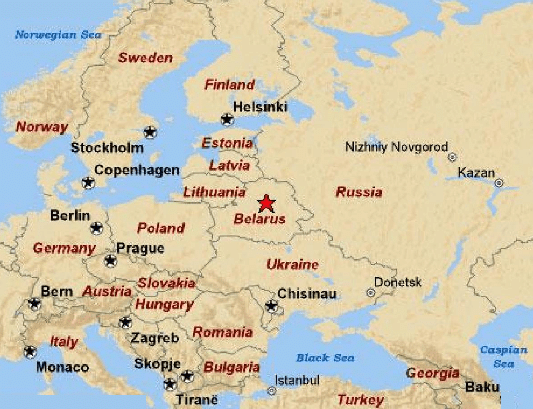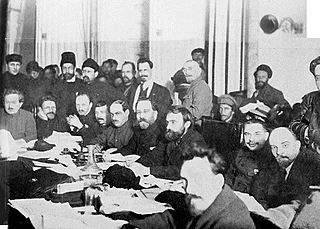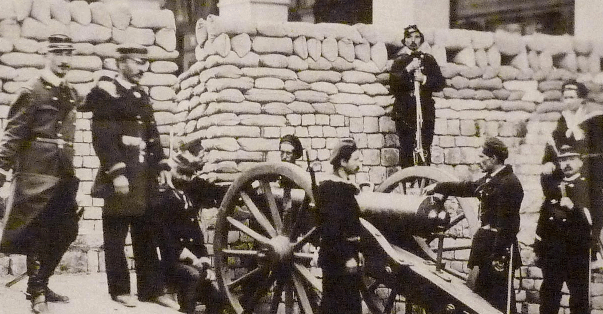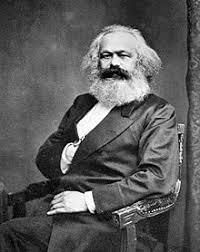Class 9 History Chapter 2 Extra Question Answers - Socialism in Europe and the Russian Revolution
Ans: The elected representative body formed in Russia after 1905 was the Duma.
Q2: What was the root of all evils in society, according to socialism?
Ans: Private property was the root of all evils in society, according to socialism.
Q3: What kind of socialist society did the 19th-century French socialist Louis Blanc want?
Ans: Louis Blanc wanted the government to encourage cooperatives and replace capitalist enterprises.
Q4: How did the cooperatives function, according to Louis Blanc?
Ans: Louis Blanc: He wanted the government to encourage cooperatives and replace capitalist enterprises. He suggested cooperatives in order to guarantee employment for the urban poor. He believed that cooperatives should be formed with the cooperation of the people, and its profit should be divided according to the work done by the members.
Q5: How did the revolutionaries originate in the year 1815?
Ans: Some nationalists, liberals and radicals wanted revolutions to put an end to the kind of governments established in Europe in 1815. In France, Italy, Germany and Russia, they became revolutionaries and worked to overthrow existing monarchs.
Q6: Name the international body which formed in 1889 to coordinate the efforts of socialists all over Europe.
Ans: This organisation was known as the Second International.
Q7: Explain the term Conservatives.
Ans: The Conservatives were opposed to any change, i.e. they were opposed to radicals and liberals. By the 19th century, however, they accepted that some change was inevitable but believed that the past had to be respected and change had to be brought about through a slow process.
Q8: What was the boundary of the Russian empire during 1914?
Ans: In 1914, besides the territory around Moscow, the Russian empire included current-day Finland, Latvia, Lithuania, Estonia, parts of Poland, Ukraine and Belarus, Georgia, Armenia and Azerbaijan. Russia and its territories
Russia and its territories
Q9: Where did the Bolsheviks sign a peace treaty with the Germans in March 1918?
Ans: The Bolsheviks signed a peace treaty with the Germans in March 1918 at Brest Litovsk in Soviet Russia.
Q10: Name the ruler of Russia at the start of the First World War.
Ans: Tsar Nicholas II was the ruler of Russia at the start of the First World War.
Q11: What were the views of the liberals in 19th-century Europe regarding universal adult franchise?
Ans: The liberals were opposed to universal adult franchise. They felt men of property mainly should have the right to vote. They also did not want to vote for women.
Q12: Which groups of workers were regarded as aristocrats among workers?
Ans: The metal workers were regarded as aristocrats among workers.
Q13: At the time of the revolution, what was the profession of the majority of Russia's population?
Ans: The profession of the majority of Russia's population was agriculture.
Q14: Mention the most significant result of the February Revolution.
Ans: The abdication of Tsar Nicholas II was the most significant result of the February Revolution.
Q15: By what other name was the Russian Revolution of 1917 known?
Ans: The Russian Revolution of 1917 was also known as the October Revolution.
Q16: Name the original initiator of the ideas of communism.
Ans: Karl Marx (1818-1883), a German philosopher, economist, sociologist, historian, journalist, and revolutionary socialist, was the original initiator of the ideas of communism.
Q17: On which issues did the liberals and radicals of 19th-century Europe differ?
Ans: The liberals and radicals differed on the issues of property and privileges. Many radicals supported women's suffragette movements. Unlike liberals, the radicals opposed the privileges of great landowners and wealthy factory owners.
Q18: Point out the main features of 19th-century Europe.
Ans: It was a time of profound social and economic changes in 19th-century Europe when new cities came up, newly industrialised regions developed, railways expanded, and the Industrial Revolution occurred.
Q19: Name some important socialists of 19th-century Europe.
Ans: Karl Marx and Friedrich Engels were important socialists of 19th-century Europe. Friedrich Engels
Friedrich Engels
Q20: Explain the major demands of Lenin's April Theses.
Ans: The major demands of Lenin's 'April Theses' were that the war be brought to a close, land be transferred to the peasants and banks be nationalised.
Q21: Explain the role of Alexander Kerenskii in the Russian Revolution.
Ans: He became the second Prime Minister of the provisional government formed after the February Revolution.
Q22: What was 'Cheka' in Russia after the revolution?
Ans: The Russian Secret Police under Bolshevik rule was referred to by the name 'Cheka'.
Q23: Mention the objective of the women's suffragette movement.
Ans: Its objective was to give women the right to vote.
Q24: What name was the event 'Bloody Sunday' later on called?
Ans: It was called the 1905 Revolution.
Q25: Explain the significance of the Russian revolution.
Ans: The major significance of the Russian Revolution was the establishment of a socialist state.
Q26: Who has sought to build a cooperative community called 'New Harmony'?
Ans: Robert Owen has sought to build a cooperative community called 'New Harmony.'
Q27: In which year was the Russian Social Democratic Workers Party founded?
Ans: In 1898, the Russian Social Democratic Workers Party was founded.
Q28: Name the religion which was followed by most of the people of Russia.
Ans: Most of the people of Russia followed Russian Orthodox Christianity.
Q29: Mention the period of civil war in Russia.
Ans: The period of civil war in Russia was 1918-1920.
Q30: Who led the Bolsheviks in Russia after the division of the Socialist Revolution Party?
Ans: Vladimir Lenin led the Bolsheviks in Russia after the division of the Socialist Revolutionary Party.
Q31: What kind of members were incorporated in the Duma under the Tsar in Russia?
Ans: The conservatives were incorporated into the Duma under the Tsar in Russia.
Q32: Mention the other name of the commune in Russia.
Ans: In Russia, the commune of farmers was known as 'Mir'.
Q33: In the context of Russia, who launched the slogan 'Peace, Land and Bread?
Ans: In the context of Russia, Lenin launched this slogan.
Q34: In the context of Russia, what was 'Kolkhoz?
Ans: Kolkhoz was a collective farm in Russia.
Q35: In the Russian Civil War, the Bolsheviks and the socialist revolutionaries were represented by which of the following colours?
Ans: In the Russian civil war, the Bolsheviks and the socialist revolutionaries were represented in red and green colours.
Q36: Who were the socialists in 19th-century Europe? What kind of society did they envisage?
Ans: Socialists were against private property and saw it as the root of all social evils. They believed in the idea of cooperatives. In cooperatives, people form associations and produce goods together. The profits of the business were divided among all members of the association. However, different socialists had different views regarding how the cooperatives were to be built. Robert Owen, one of the founders of socialism, suggested that cooperatives be built on individual initiative. Other socialists like Louis Blanc wanted the government to encourage cooperatives and replace capitalist enterprises.
Q37: What was Bloody Sunday? Or Describe the incident known as 'Bloody Sunday'? State any two events after the Bloody Sunday which led to the revolution of 1905 in Russia.
Ans: On Sunday, 22nd January 1905, the workers of Russia, led by Father Gapon, reached the winter palace of the Tsar to present a petition. But they were fired at indiscriminately by police and the cossacks, resulting in the death of more than 100 workers, with 300 workers wounded. This started a series of events that became known as the 1905 Revolution. This incident is known as 'Bloody Sunday' in Russian history.
(i) The news provoked unprecedented disturbances throughout Russia. Strikes took place all over the country.
(ii) The Universities of Russia were closed down when student bodies staged walkouts, complaining about the lack of civil liberties.
(iii) Lawyers, doctors, engineers, and middle-class workers established the Union of Unions and demanded a constituent assembly.
Q38: Who were the Bolsheviks?
Ans: Fig. BolsheviksBolshevism was born at the second congress of the Russian Social Democratic Labour Party (RSDLP) in 1903. Bolsheviks were the majority group of workers in Russia. They believed in revolutionary methods for bringing about changes in society and the state. After the October Revolution, Russia became a one-party state, i.e., the Bolshevik Party, which was renamed the Russian Communist Party (Bolshevik). They changed the whole structure of Russia and Russian Society.
Fig. BolsheviksBolshevism was born at the second congress of the Russian Social Democratic Labour Party (RSDLP) in 1903. Bolsheviks were the majority group of workers in Russia. They believed in revolutionary methods for bringing about changes in society and the state. After the October Revolution, Russia became a one-party state, i.e., the Bolshevik Party, which was renamed the Russian Communist Party (Bolshevik). They changed the whole structure of Russia and Russian Society.
Q39: Explain the term 'Mensheviks'.
Ans:  Fig. Leaders of MensheviksMensheviks were a minority group of workers in Russia. They believed in parliamentary methods and participation in elections. They thought that the party should be open to all. They favoured parties as existing in France and Germany, which took part in elections to the legislatures. Whereas the Bolsheviks argued that the working class should lead the revolution in alliance with the peasantry, the Mensheviks envisaged its being led by the bourgeoisie and favoured alliances with the liberals.
Fig. Leaders of MensheviksMensheviks were a minority group of workers in Russia. They believed in parliamentary methods and participation in elections. They thought that the party should be open to all. They favoured parties as existing in France and Germany, which took part in elections to the legislatures. Whereas the Bolsheviks argued that the working class should lead the revolution in alliance with the peasantry, the Mensheviks envisaged its being led by the bourgeoisie and favoured alliances with the liberals.
Q40: What was Paris Commune?
Ans: There was a popular uprising in Paris between March and May 1871. In March 1871, elections were held in Paris to elect 90 members to serve as the Government of the Commune. The Paris Commune declared that its main purpose was to end the exploitation of workers and monopolies. From this commune, the concept of 'Dictatorship of the Proletariat' emerged. The French Government crushed this uprising ruthlessly. The uprising ended in May 1871.  Fig. Paris Commune
Fig. Paris Commune
Q41: What was the Duma? How far was it successful?
Ans: The Tsar of Russia allowed the creation of an elected consultative Parliament, which was known as the Duma. Duma had representatives from the third estate. The Tsar dismissed the first Duma within 75 days and re-elected a second Duma within three months. He did not want any questioning of his authority. He changed the voting laws and packed the third Duma with conservative politicians.
In Russia, the 'reds' meant Bolsheviks, the 'greens' meant socialist revolutionaries and the 'whites' meant pro-Tsarists. The Bolsheviks were the majority group of workers under the leadership of Lenin. During 1918 and 1919, the 'greens' (Socialist Revolutionaries) and the 'whites' (pro-Tsarists) controlled most of the Russian empire. They were backed by French, American, British and Japanese troops who were opposed to the growth of socialism in Russia.
Q42: What do you mean by the 'reds', 'greens' and 'whites' in the context of Russia?
Ans: Lenin's New Economic Policy, promulgated by decree on 21st March 1921, was a temporary retreat from full socialism to partial capitalism for the purpose of rebuilding Russia's economy. It permitted small businesses to make personal profits while the state continued to control banks, foreign trade and large industries. Elements of capitalism, such as individual profit and private ownership of land, were permitted in order to revitalise the Russian economy.
Q43: Explain Lenin's new economic policy.
Ans: (i) Capitalists are owners of the industries in which they have invested capital. They believe in private property and a class based society. Socialists think that all property and means of production should be socially controlled. They believe in a classless society.
(ii) Capitalists believe that the profit should be enjoyed by the owners of the industry. Socialists believe that profits are the result of workers' labour, so workers deserve to share it.
Q44: List two differences between the capitalist and socialist ideas of private property.
Ans: The Bolsheviks controlled most of the former Russian empire by January 1920. People in Central Asia responded positively and with enthusiasm to the February Revolution of 1917 because the revolution freed them from the oppression of the Tsar's regime and strengthened their hopes for autonomy. But they responded with fear to the October Revolution of 1917 because the autocracy of the Tsar was replaced by the autocracy of the Bolsheviks. In Khiva in central Asia, Bolshevik colonists brutally massacred local nationalists in the name of defending socialism. In this situation, people in Central Asia were confused about the real nature of the Bolshevik Government.
Q45: Why did people in Central Asia respond to the Russian Revolution in different ways?
Ans: Although the liberals argued for a representative, elected parliamentary government, they were not 'democrats' because
(i) They did not believe in the universal adult franchise, i.e., the right of every citizen to vote.
(ii) They felt men of property should mainly have the right to vote.
(iii) they were not in favour of women's suffrage.
Q46: 'Liberals of European states were not democratic'. Justify the statement by giving three examples.
Ans: Karl Marx's theories were central to the party ideology of Lenin's Bolsheviks and had a key role to play in the 1917 revolution and the establishment of the Russian communist state. Marx believed that all historical changes were caused by a series of class struggles between the bourgeoisie 'haves' and the proletariat 'have nots'. Vladimir Lenin was majorly influenced by Marx's writings. Karl Marx said that industrial society was capitalist, under which workers did not get their share properly. He wanted the whole society to have common control over the means of production, i.e., all production units should be nationalised. He thought that capitalism could be voted out only through revolution. Marx's idea deeply influenced Lenin and the Bolshevik Revolution, and they followed it wholeheartedly.
Q47: What was the contribution of Karl Marx in beginning about the Russian Revolution of 1917?
Ans:  Fig. Karl Marx The First World War had a severe impact on Russian industry.
Fig. Karl Marx The First World War had a severe impact on Russian industry.
(i) Russia's own industries were few in number, and the country was also cut off from other suppliers of industrial goods by German control of the Baltic Sea.
(ii) Industrial equipment disintegrated more rapidly in Russia than in any other country in Europe.
(iii) By 1916, railway lines began to break down.
(iv) Able-bodied men were called up to the war, and as a result, there were labour shortages, and small workshops producing essentials were shut down.
(v) Large supplies of grains were sent to feed the army, bread and flour became scarce, and riots at the bread shop became common incidents.
Q48: Explain any three effects of the First World War on the industries in Russia. Or State any three effects of the First World War on the Russian Economy.
Ans: (i) At the beginning of the 20th century in Russia, most industries were owned by industrialists.
(ii) The government supervised large factories to ensure minimum wages and time of working hours.
(iii) In crafts units and small workshops, sometimes working hours were 15 hours, compared with 10 or 12 hours in big factories.
(iv) Workers were divided into different social groups, and they were also divided by skill.
(v) Women consisted of 31 per cent of the factory labour force. The wages of a female worker was less than a male worker.
(vi) Some workers formed associations to help other workers in times of hardship.
Q49: Describe the conditions of the workers under the Tsar in Russia.
Or
Describe any three points regarding the condition of workers in Russia in the beginning of the 20th century.
Or
Explain the condition of workers in Russia before 1917.
Ans: In Russia, the nobility, the crown and the Orthodox Church owned large landed properties.
(vi) In 1902, peasant agitation occurred on a large scale in South Russia, and in 1905, it spread all over Russia.
(vii) Russian peasants were different from the other European peasants. Sometimes, they pooled their land together.
(viii) Peasants established a commune (mir), which divided the land according to the needs of the individual family.
Q50: Discuss the relationship between peasants and nobles in Russia during the early 19th century.
Ans: At the beginning of the 20th century, the Russian people were mainly agriculturists. About 85 percent of the Russian population was agriculturists, which is higher than that of other European countries.
(i) Industry in Russia was developed in some pockets like St Petersburg and Moscow. Large factories existed alongside craft workshops.
(ii) Many factories were set up in the 1890s. The reason behind this was the extension of the railway network and the increase in foreign investment.
(iii) Coal production doubled, and iron and steel output quadrupled at that time.
(iv) Most industries were owned by industrialists, but the government supervised the wage scale and timing of the factories.
|
55 videos|525 docs|78 tests
|
FAQs on Class 9 History Chapter 2 Extra Question Answers - Socialism in Europe and the Russian Revolution
Ans. Socialism is a political and economic theory advocating for the collective ownership and control of the means of production. It gained popularity in Europe during the 19th and 20th centuries due to the rise of industrialization, growing wealth inequality, and the desire for social equality and workers' rights.
2. What were the main goals of the Russian Revolution?$#
Ans. The main goals of the Russian Revolution, which took place in 1917, were to overthrow the autocratic Tsarist regime, establish a socialist government led by the Bolshevik Party, redistribute land to the peasants, and improve the conditions of the working class.
3. How did the Russian Revolution impact Europe?$#
Ans. The Russian Revolution had a significant impact on Europe by inspiring socialist movements and revolutions in other countries, leading to the spread of socialist ideas and the growth of communist parties across the continent. It also contributed to the end of World War I and the eventual collapse of several European monarchies.
4. What role did Vladimir Lenin play in the Russian Revolution?$#
Ans. Vladimir Lenin was a key figure in the Russian Revolution, leading the Bolshevik Party to power and establishing the first socialist government in the world. He played a crucial role in organizing the October Revolution, shaping Soviet policies, and laying the foundation for the Soviet Union.
5. How did socialism in Europe evolve after the Russian Revolution?$#
Ans. After the Russian Revolution, socialism in Europe experienced both advancements and setbacks. The spread of communist ideology led to the establishment of socialist governments in several countries, such as Hungary and Germany, but also faced opposition from capitalist powers and internal conflicts within socialist movements.

















